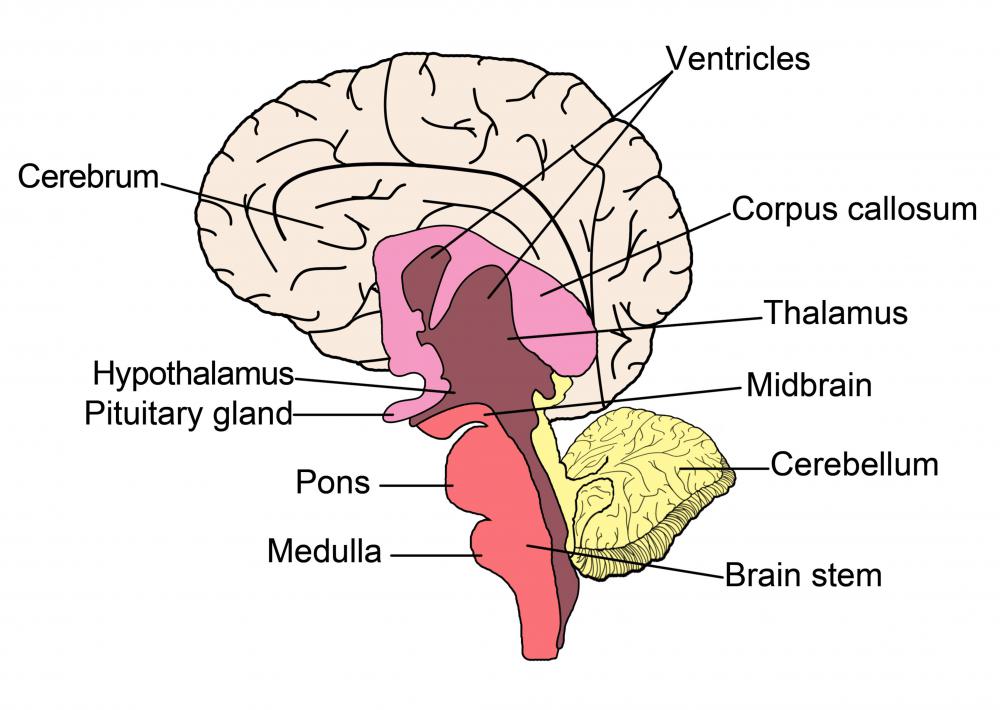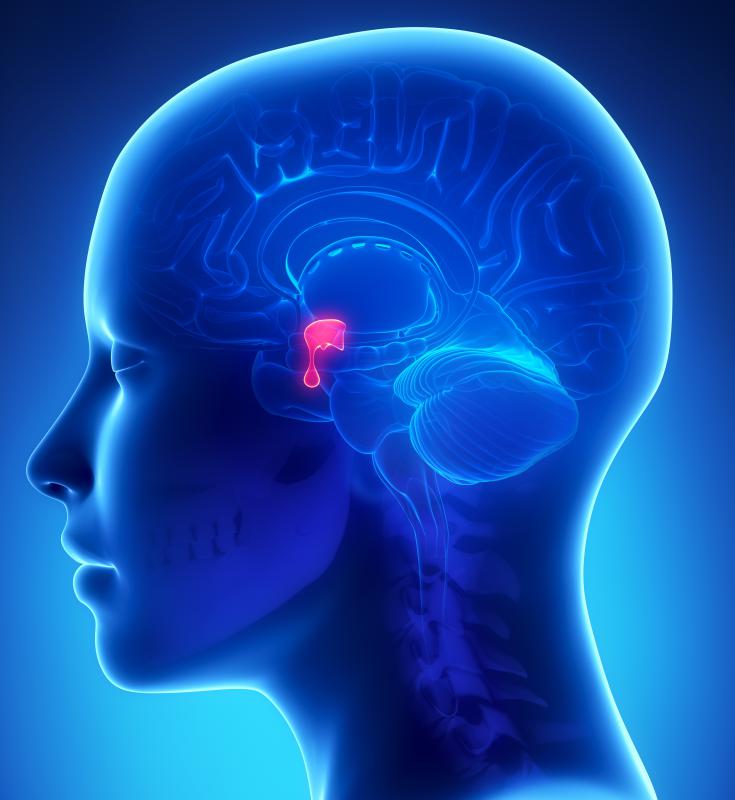At WiseGEEK, we're committed to delivering accurate, trustworthy information. Our expert-authored content is rigorously fact-checked and sourced from credible authorities. Discover how we uphold the highest standards in providing you with reliable knowledge.
What Is Involved in FSH Production?
FSH, or follicle stimulating hormone, is produced by cells known as gonadotrophs situated in the pituitary gland at the base of the brain. The pituitary secretes FSH in response to a hormone known as GnRH, or gonadotropin releasing hormone. GnRH is released from another part of the brain called the hypothalamus and travels in the blood to the pituitary. After FSH has been secreted, it stimulates the testicles or ovaries to produce sex hormones. In what is called a negative feedback loop, the presence of sex hormones in the blood causes a decrease in GnRH secretion from the hypothalamus and inhibits gonadotrophs in the pituitary gland from producing FSH, with the result that FSH production falls.
Together with another hormone secreted by the pituitary, known as luteinizing hormone or LH, follicle stimulating hormone is what is known as a gonadotropin. As gonadotropins, both LH and FSH have an effect on the gonads, which are the ovaries and testicles. In women, FSH affects the maturation of ovarian follicles in which eggs develop, and, in men, FSH helps in the production of sperm. Both FSH and LH are made inside gonadotroph cells in the pituitary gland, and each consists of an alpha subunit and a beta subunit. While the alpha subunits are the same in both hormones, the beta subunits, which bind onto specific receptors, are different.

Toward the end of one menstrual cycle and the beginning of the next, the follicle left over after ovulation, known as the corpus luteum, degenerates and its production of the sex hormones estrogen and progesterone decreases. This fall in sex hormone levels stimulates the hypothalamus to secrete more GnRH, and the rise in GnRH causes the pituitary to increase its FSH production. FSH then acts on ovarian follicles so that they grow and mature ready for the next cycle. In men, it helps to maintain the Sertoli cells, which are necessary for sperm to develop.

In women, after the bleeding of the menstrual cycle has occurred, FSH production continues to increase and the follicles carry on growing. At first, they only produce small amounts of sex hormones, but, eventually, levels rise and a negative feedback effect begins, with increased hormone levels in the blood causing a decrease in GnRH secretion. The pituitary's FSH production falls accordingly, but the dominant follicle, which will undergo ovulation, continues to develop and secretes estrogen. Without progesterone, estrogen has a positive feedback effect on GnRH, and levels rise to a peak at ovulation, with a corresponding peak in FSH secretion. Once ovulation has taken place, both progesterone and estrogen are secreted and their levels increase until negative feedback is triggered, GnRH release decreases and LH and FSH production are lowered once more.
AS FEATURED ON:
AS FEATURED ON:















Discuss this Article
Post your comments